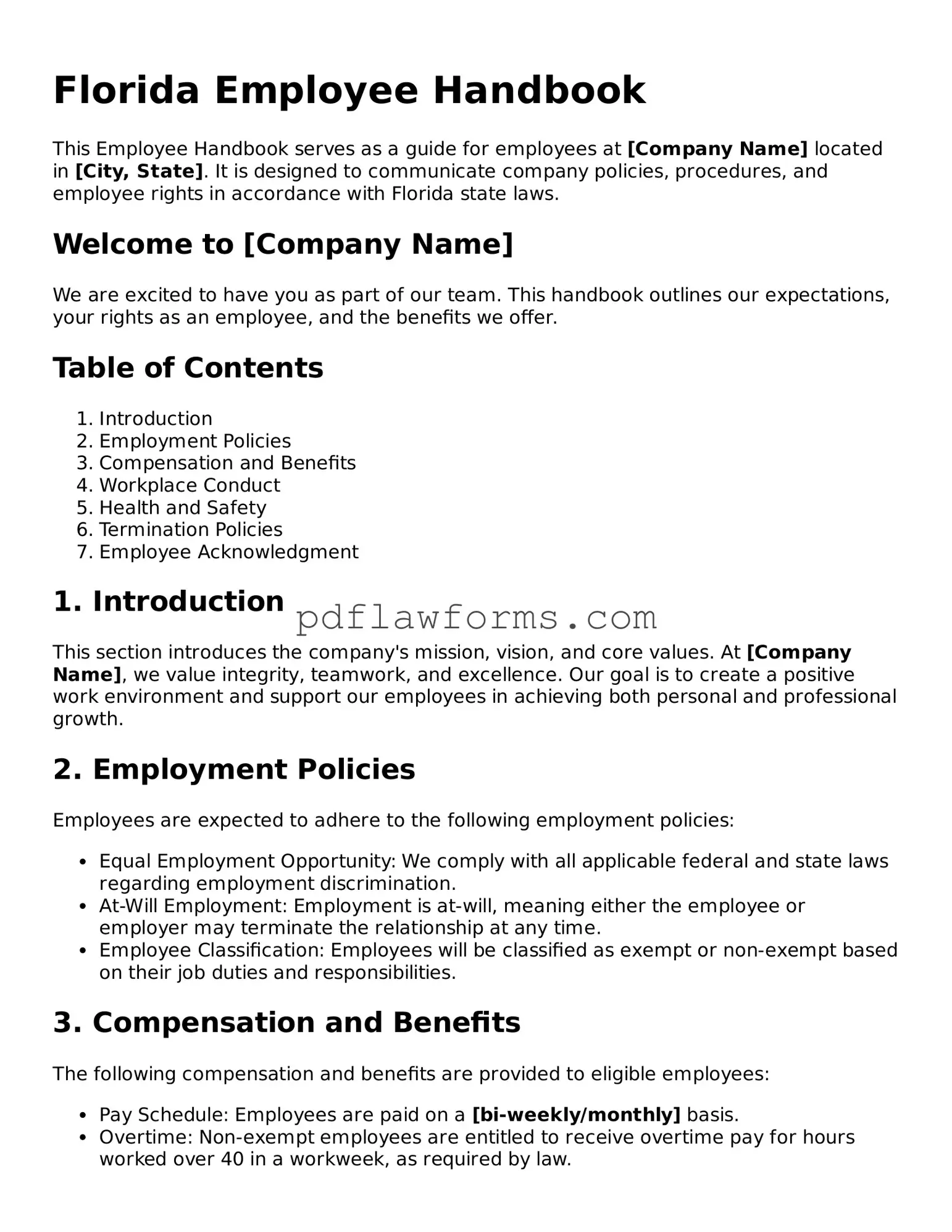Filling out the Florida Employee Handbook form can be a straightforward process, but many individuals make common mistakes that can lead to confusion or delays. Understanding these pitfalls can help ensure that your form is completed correctly and efficiently.
One frequent mistake is not reading the instructions carefully. Each section of the form has specific requirements, and skipping over these can result in incomplete or incorrect submissions. Taking the time to thoroughly read the guidelines can save you from having to redo the form later.
Another common error is leaving sections blank. While it might seem harmless to skip a question that doesn’t seem relevant, many forms require complete information to be valid. Always strive to provide answers for every section, even if it means writing “not applicable” where necessary.
Some individuals also fail to double-check their personal information. Mistakes in your name, address, or contact information can lead to complications down the line. A quick review can help catch these errors before they become a problem.
Additionally, many people overlook the importance of signing and dating the form. A signature not only verifies that you have completed the form but also confirms that you agree to the terms outlined. Forgetting this step can render your submission invalid.
Failing to keep a copy of the completed form is another mistake that can create issues. Having a personal record allows you to reference your submission later if needed. It’s always wise to keep a copy for your own records.
Another area where mistakes often occur is misunderstanding the company policies listed in the handbook. If you’re unsure about any of the policies, it’s crucial to ask questions rather than guessing. Misinterpretations can lead to compliance issues or misunderstandings about your rights and responsibilities.
Some individuals might rush through the form, leading to careless mistakes. Taking your time to carefully fill out each section can help ensure accuracy. A rushed form is often a source of errors that could have been easily avoided.
Another common oversight is not updating the form when necessary. If your personal situation changes—such as a new address or a change in emergency contacts—it’s important to update your information promptly. Keeping your details current helps maintain effective communication with your employer.
Lastly, many people forget to ask for help if they are confused about any part of the form. Whether it’s a colleague, supervisor, or HR representative, seeking assistance can clarify any uncertainties and lead to a smoother process. Don’t hesitate to reach out for guidance when needed.
By being aware of these common mistakes, you can approach the Florida Employee Handbook form with confidence. Taking the time to ensure accuracy and completeness will benefit you and your employer in the long run.
